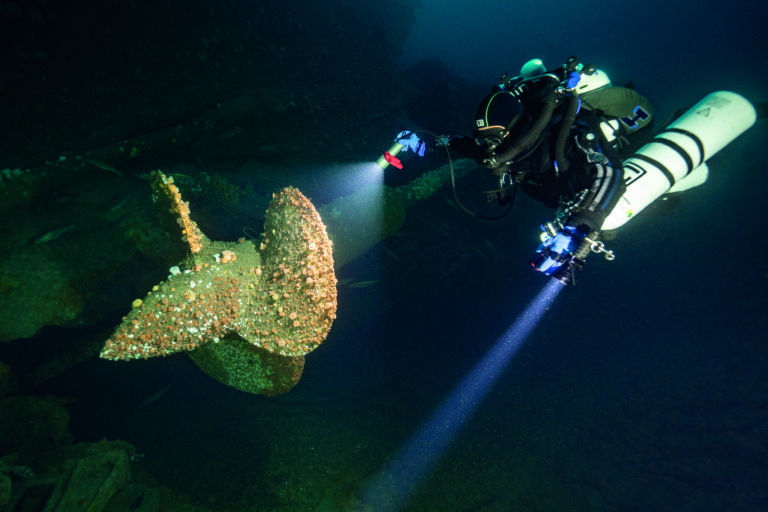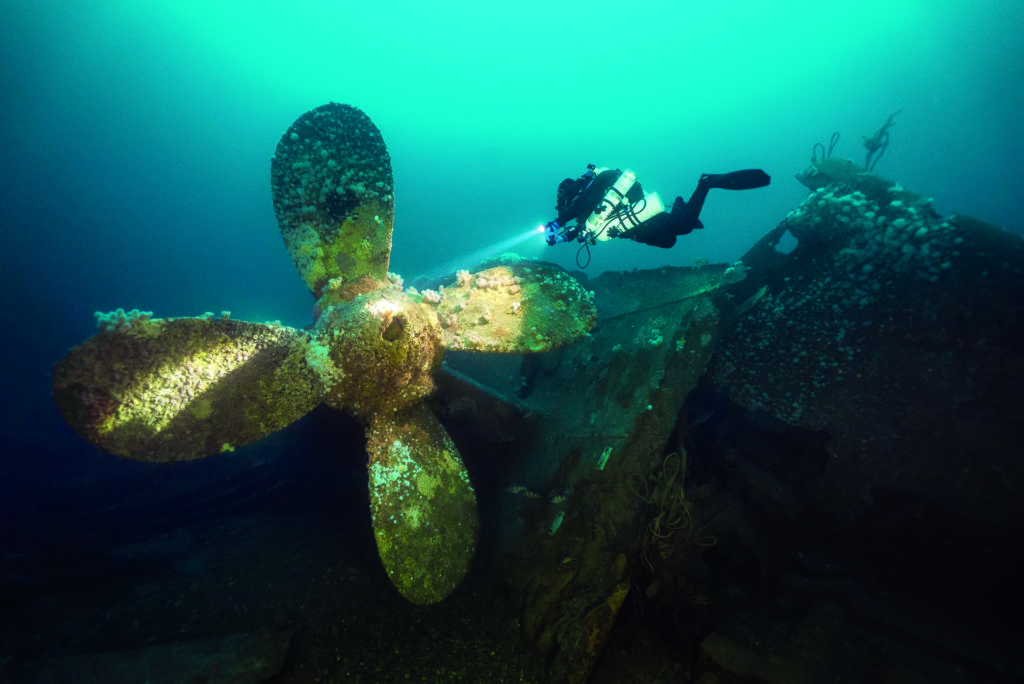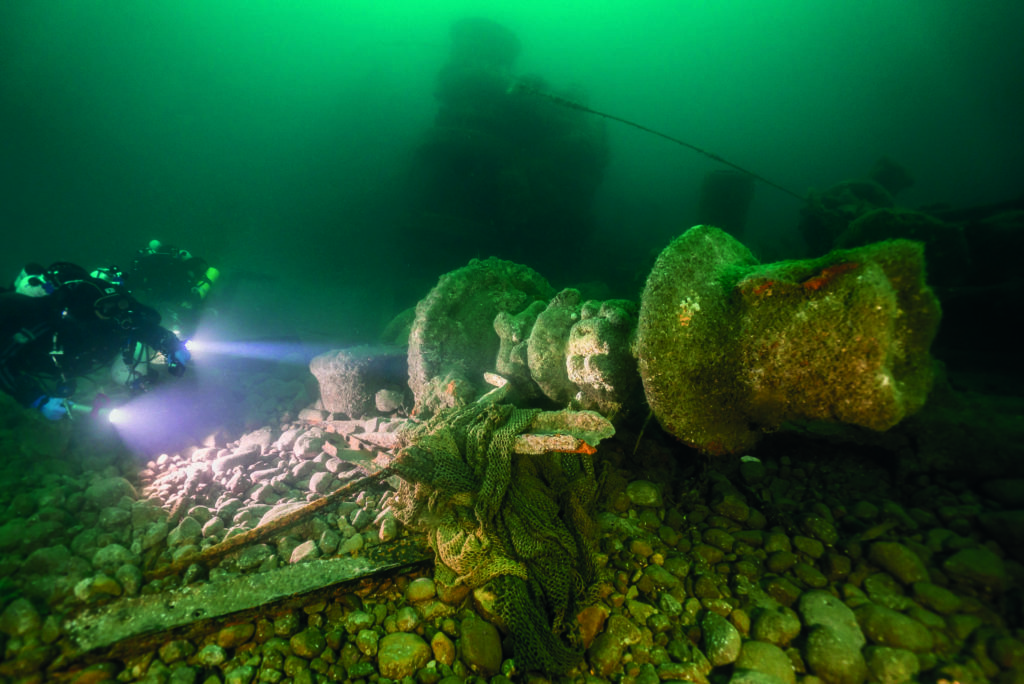It might be Scapa Flow or Truk Lagoon that springs to your mind when asked to name a wreck heaven, but for JASON BROWN the very best wreck diving might be that found off the coast of Ireland
Bikini Atoll, Truk Lagoon, the Great Lakes, the South China Sea – they’re all destinations guaranteed to put a smile on the face of even the most jaded of wreck divers. You might be surprised to learn that there is another world-class wreck destination not far off home shores – a rusty-metal nirvana so good that wreck junkies from across the globe journey there to get their fix of its many delights.
Ready for another big surprise? It’s not Scapa Flow. While Scotland’s most famous deep anchorage might grab a lot of the attention, Ireland’s Malin Head offers what is arguably the best wreck diving that money can buy without having to endure a long-haul flight, inflight food and risk deep-vein thrombosis.
Lying in the clear Atlantic waters off Ireland’s northernmost coastline, Malin is a veritable diver’s playground, littered with sunken steel behemoths bristling with deadly weapons of war and wartime paraphernalia. Think big guns, WW2 tanks piled on top of each other like scattered Tonka toys, propellers as big as a truck and live ammunition in every direction and you won’t go far wrong. It’s a wreck diver’s dream!
Getting to Malin
Getting to Malin Head is easy, because the destination is well-served by transport links from various points in the UK. For divers travelling from England, a ferry from Liverpool to either Belfast or Dublin will see you on the right side of the Irish Sea. From there it’s a 2.5hr drive (from Belfast) to the small fishing village of Carrigart on the Rosguill Penninsula of County Donegal.
Offering all the usual trappings of a picturesque Irish fishing village (including a couple of good pubs), Carrigart is also home to Mevagh Dive Centre, which specialises in serving divers visiting the wrecks of Malin Head.
The dive-centre’s hardboat Laura Dean is an 11m catamaran purpose-built to carry divers. Diving Malin Head is strictly for the techies, however, with all but one of the headline dives lying deeper than 50m. Even then, to maximise your time on any of Malin’s wrecks a rebreather is the weapon of choice, and trimix a must.
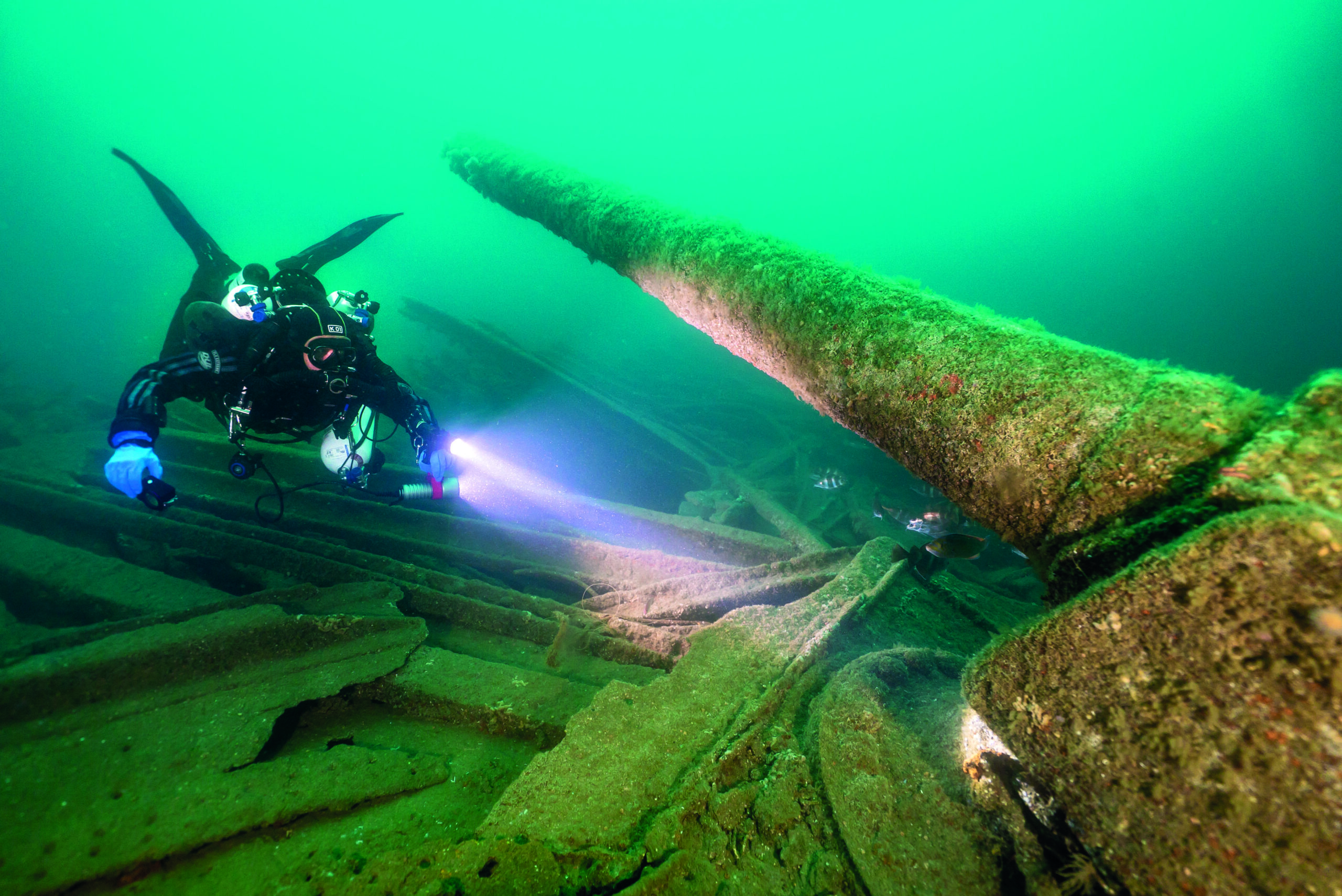

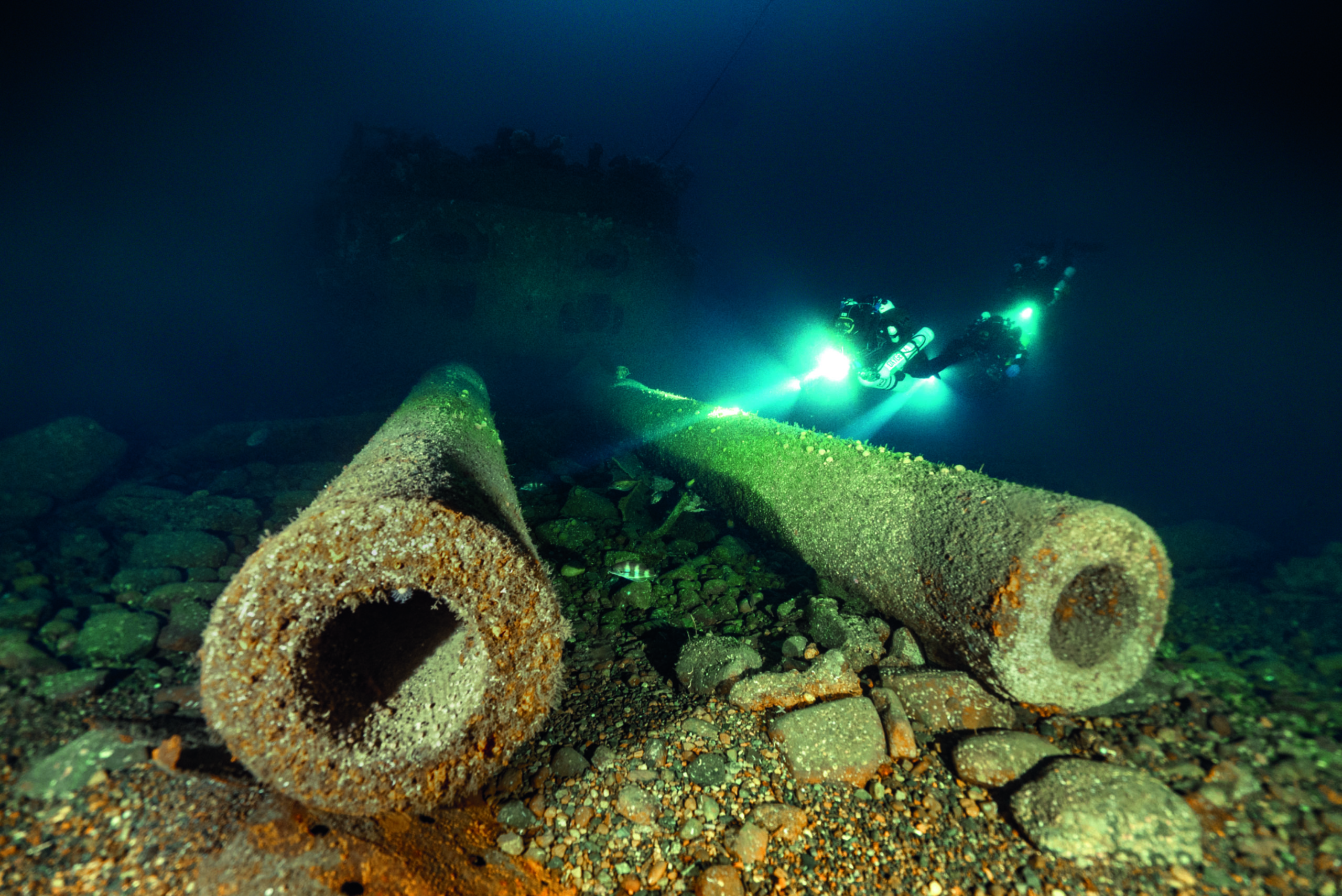
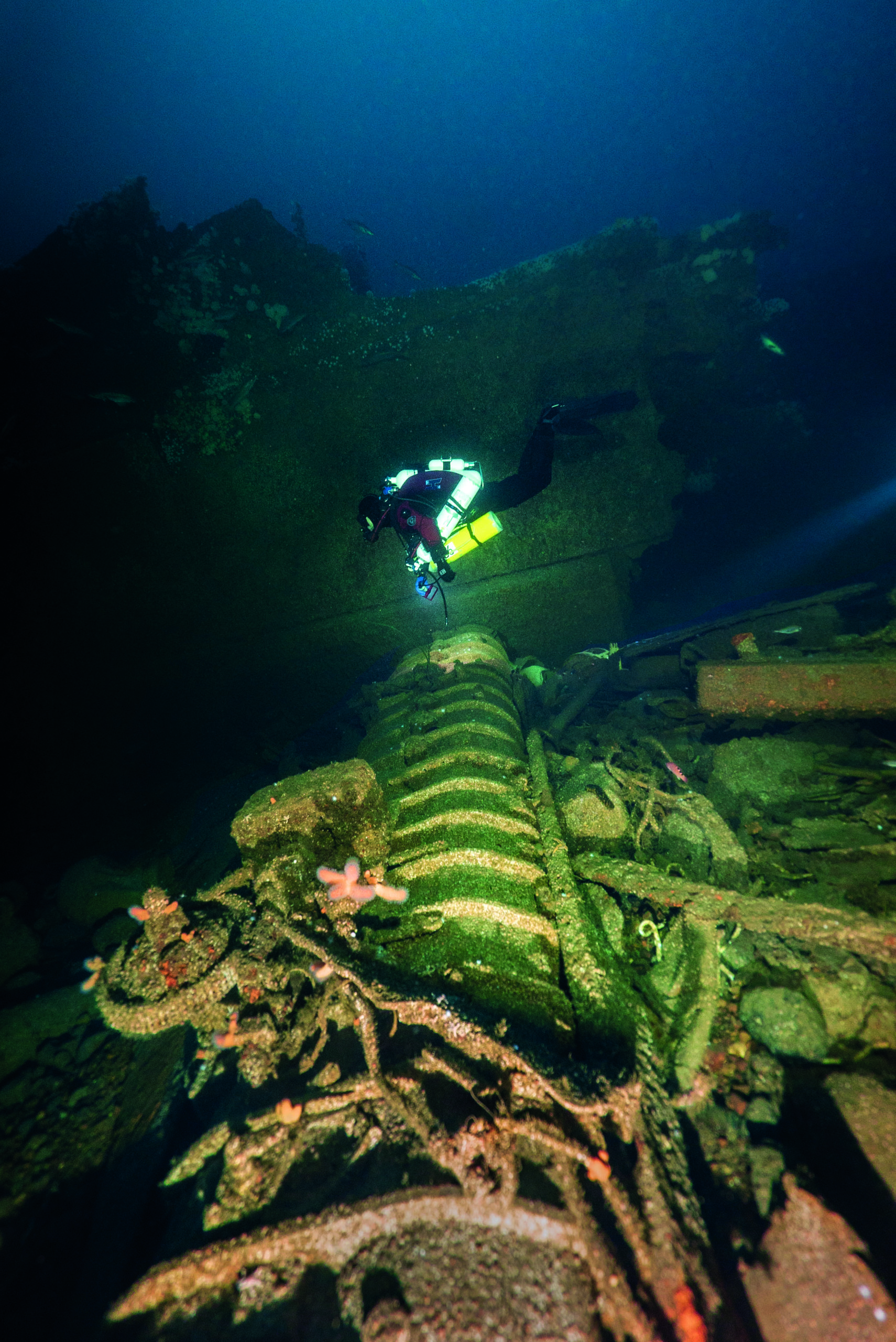
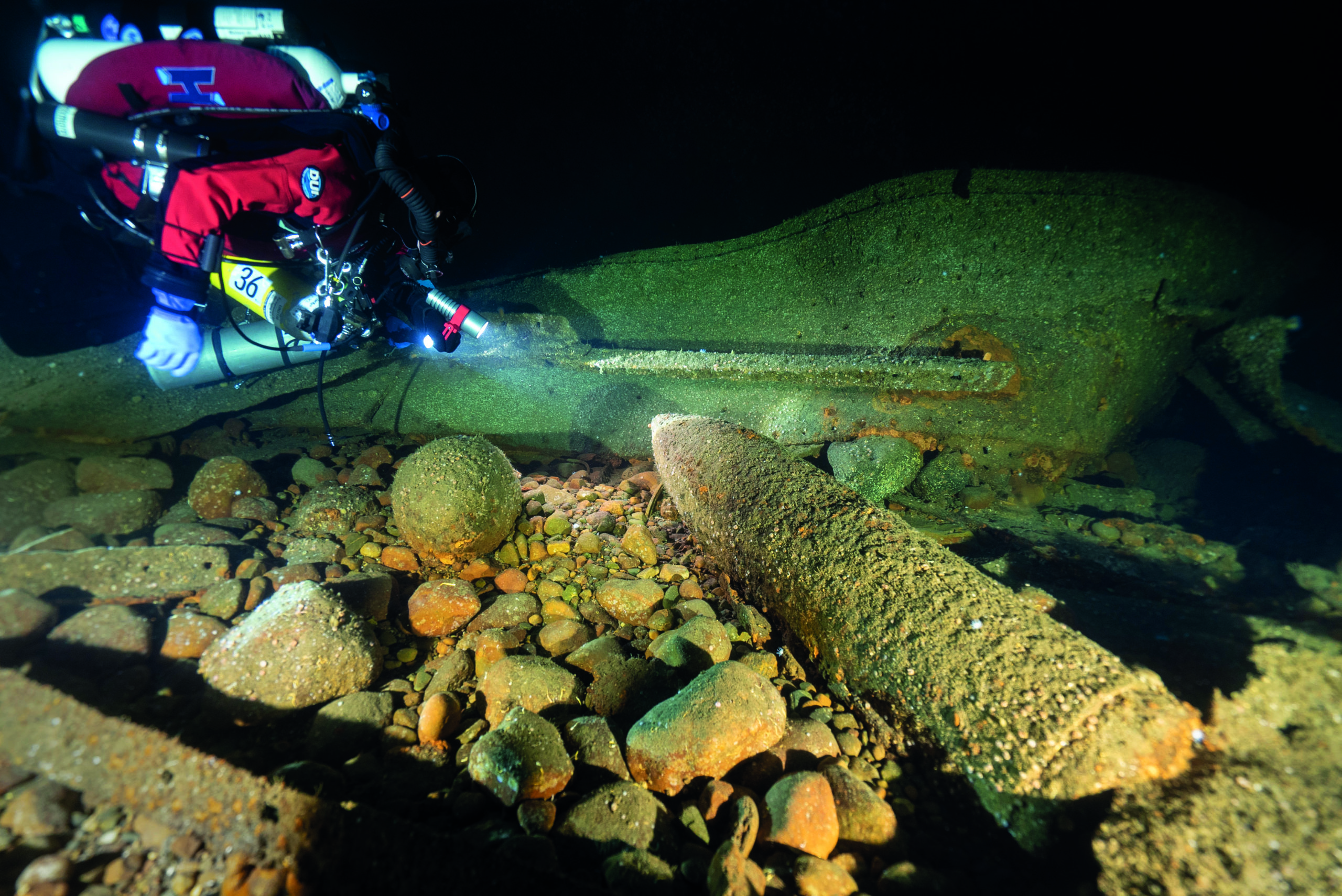
Open-circuit trimix is an option, but a week’s worth of bubbling will leave a serious dent in your wallet. A rebreather, on the other hand, will be far kinder on your pocket and deliver the sort of bottom times you will need to appreciate the world-class diving on offer.
HMS Audacious
Nowhere is this more evident than on the first of Malin’s wrecks – HMS Audacious. Sunk in October 1914 after hitting a German mine, Audacious was a 23,000-tonne King George V-class Dreadnought that saw no more than a year of service before she slipped beneath the waves.
Like many top-heavy battleships of the time, Audacious “turned turtle” as she sank and now lies upside-down at a depth of 64m. Despite her less-than-glorious service record, Audacious is regarded by many as the signature wreck of Malin Head thanks to one iconic feature – an upturned gun-turret complete with massive 13.5in gun-barrels that now lie flat against the rocky seabed.
It’s hard not to be blown away by the sheer scale of these monstrous weapons of war – you wouldn’t want to be on the wrong end of them, that’s for sure!
Getting out to Audacious takes about two hours because the wreck lies about 15 miles offshore. Most skippers will shot it amidships near the iconic turret, but the stern is also a good place to start. Visibility can be so good – 20-30m-plus is not unheard of – that the massive turret can be seen during descent.
Moving on, it’s worth venturing further afield to check out Audacious’s four large props, still visible at the stern, and the massive cylindrical barbette that once protected one of the ship’s five main gun-turrets behind its 10in-thick armour. Care must be taken around the wreck-site, because there is still a lot of unexploded ordnance, including some very large high-explosive shells.
Empire Heritage
Thirty years later, with WW2 in full swing, Malin Head would claim another victim – the steamship Empire Heritage. Originally built as a whale factory ship in South Africa, the Empire Heritage would suffer the ignominy of being sunk not once but twice in her career.
Refloated in 1941 after hitting a mine, her fate was sealed for good in September 1944 while en route to Liverpool from the USA carrying heavy war supplies. Some 20 miles north-west of Malin Head, two torpedoes from the German submarine U-482 ended her journey, with the loss of 113 lives.
Today the Empire Heritage lies on its starboard side at a depth of 66m. Its violent end combined with years of bearing the brunt of Atlantic storms have taken their toll on the wreck, which is now heavily broken up. Much of the cargo is strewn across the seabed, and it is this that visiting divers come to see.
Scattered around the wreck are all manner of military vehicles, including half-tracks, trucks and, of course, the Empire Heritage’s famous Sherman tanks. Most visiting divers describe the scene as quite surreal – many of the vehicles are in such good condition that they look as if they’re sat waiting for the order to head into action.
While it’s difficult not to be drawn in by these relics of Europe’s wartime past, the wreck offers so much more. No visit would be complete without a photograph next to the wreck’s massive propeller, or its exposed boilers and engines.
Justicia
Heading out further afield, the next big headline wreck is the White Star ocean liner Justicia, which was requisitioned as a troopship by the British government during WW1.
Sitting upright at a depth of almost 70m, Justicia is also the furthest out of the wrecks. For those hardy enough to brave the three-hour boat transfer to the wreck-site, its sheer scale makes it a wreck like no other.
Sunk by six torpedoes from the German submarines UB-64 and UB-124 in July 1918, it’s difficult to comprehend just how big Justicia really was, but at more than 32,000 tonnes and 237m long, she was one of the largest vessels lost during the war.
Today the wreck makes for perhaps one Malin Head’s best dives. While it might lack the big guns and tanks that are such a draw for other wrecks in the area, what the Justicia lacks in military hardware it more than makes up for in size.

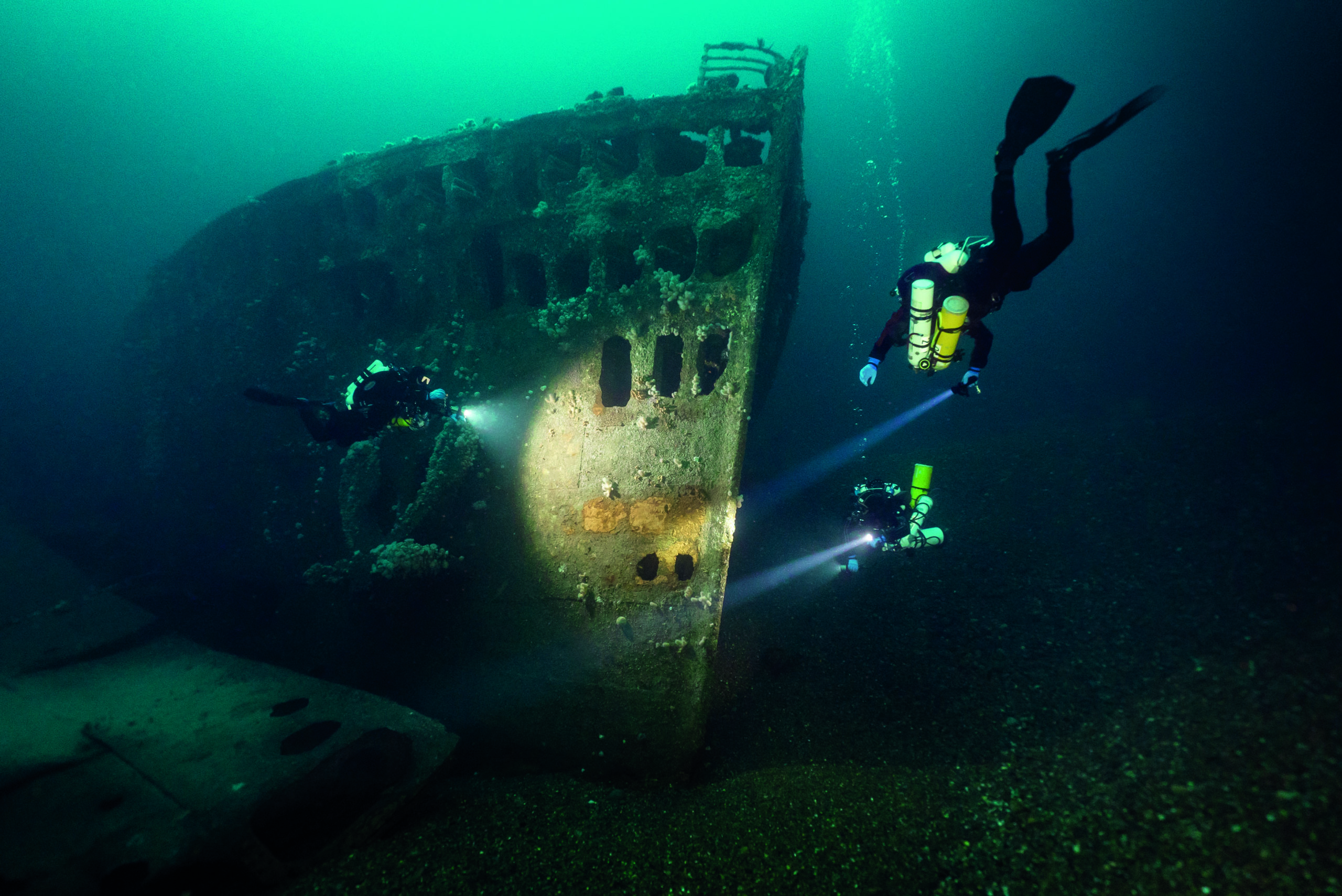



Everything about Justicia is big, from the oversized chains, derricks and capstans on its foredeck to the massive anchor that still sits in place on what remains of the broken-off bow section.
It’s the bow that is the biggest draw for most divers – few can resist having their photo taken Titanic-style from the railings that still run along its top. It’s here that you get a real feel for just how big the Justicia was.
Laurentic
When the weather doesn’t play ball, visiting divers can still get their metal fix on Laurentic, a British ocean liner that was converted to an armed merchant cruiser at the start of WW1.
At 172m, this wreck is a lot smaller than the Justicia and far more broken up, but it also happens to be much shallower. Lying in only 42m, the Laurentic might be overshadowed by the deeper wrecks in the area but is still well worth a visit.
Much of the Laurentic’s attraction is the mystery that surrounds her cargo. At the time of her sinking, the ship was carrying over 3,200 gold ingots, intended to be used to pay for war munitions.
Over the years all but 20 of the gold ingots have been recovered and, while the chances of stumbling upon your fortune is pretty slim (most of what remains of the gold will be buried deep under the seabed), this teasing fact still draws divers to the wreck.
Once the gold fever abates, you’re free to enjoy what the wreck really has to offer. For many, the real draw of the Laurentic is the large deck-gun that sits upright in the tangled wreckage. Still pointing menacingly towards a far-off enemy long-since departed, it’s a must on any photographer’s shots list.
Rough ride
It’s a good thing that Mevagh’s boat is well prepared for all that the Atlantic can throw at it, because diving Malin Head isn’t for the faint-hearted or the weak of stomach. With the area exposed to southerly winds and Atlantic swells, losing the odd day to bad weather isn’t unheard of, and the ride out to the wrecks can often be lumpy.
However, Malin offers those hardy enough to endure the topside conditions something unmatched in this part of the world – world-class diving in fantastic vis on wrecks brimming with jaw-dropping spectacle. For those dived up and experienced enough to take on the challenge, Malin Head has it all.
Photography by Graham Blackmore (with thanks to Mike Rowley & Nick Jewson)
Also on Divernet: Return To The Donegal Classics, Wreck Tour 111: The Castle Eden, Wreck Tour 136: The William Mannell
